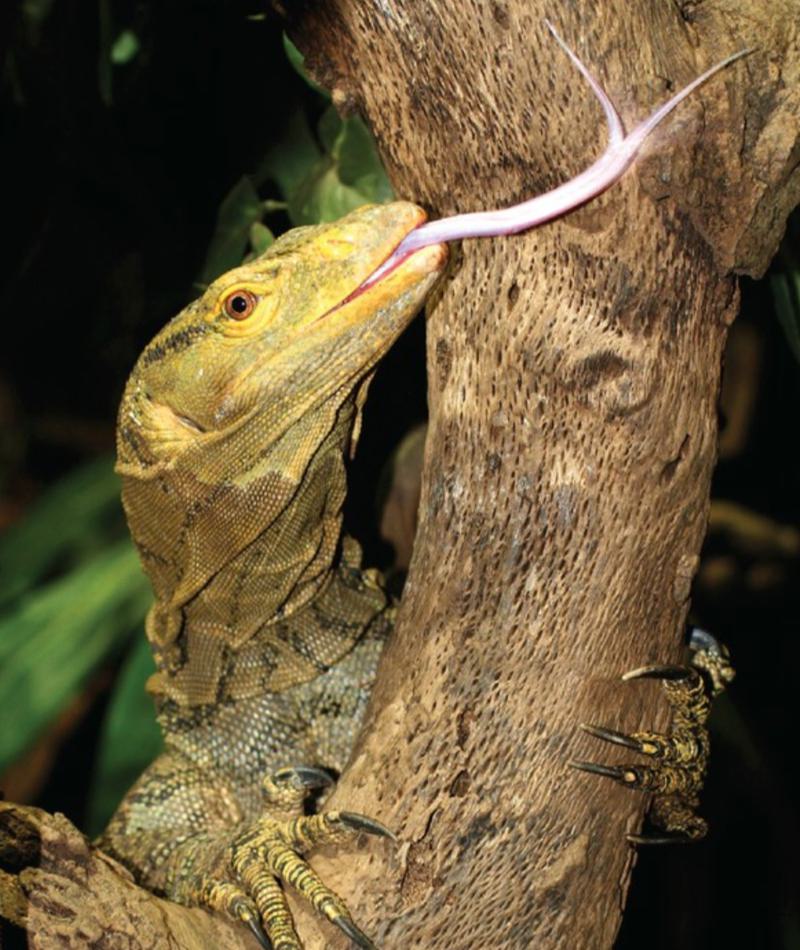
Gray's Monitor
Varanus alivaceus
Did you know?
- This monitor lizard spends most of its time in the treetops.
- Their teeth are perfect for picking up fruit and crushing snails.
- Monitors are found mainly in Asia, Africa, and Australia.
Fruit Fanatics
This species loves to eat fruit. Juvenile animals have a diet of snails or crabs, but animals change to a largely frugivorous diet as they mature.
Gentle Giants
Male Gray's monitors grow larger than females. The maximum size reported is almost 6 feet and over 20 pounds.
Threat Level
- Unknown
- Common
- Near Threatened
- Threatened
- Endangered
- Critically Endangered
- Extinct in the Wild
Threatened
The Gray's Monitor faces a high risk of extinction in the wild.
Range
Philippines, where it is known only from Luzon, Catanduanes and Pollilo.
Habitat
Primary and secondary tropical moist forest, often with rocky outcrops or cliffs in the lowlands.

We care about Gray’s monitors
The Saint Louis Zoo supports Gray’s monitors in the Charles H. Hoessle Herpetarium. Learn more about how we are helping wildlife around the world.
Find this animal in Historic Hill

SAINT LOUIS ZOO ZONE
Historic Hill
Historic Hill is a lovely stroll through one of the oldest parts of the Saint Louis Zoo. From the 1904 World’s Fair Flight Cage to the Spanish architectural flavor of the 1920s in the Bird House, Primate House and Herpetarium to the finishing touches of our thoroughly modern exhibits, this area of the Zoo has a unique ambiance and a nostalgic history that make it a great destination.

